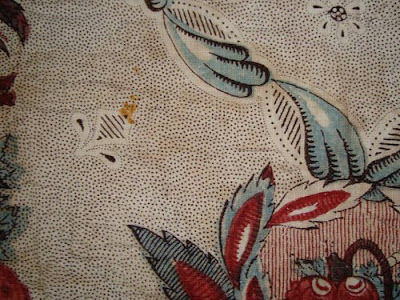



I bought a bag of tiny, damaged antique quilt panels from Petworth. I really like this one and am selling it in my ebay shop this week, but am a wee bit puzzled, the handsome gentleman sprawled in the ladies lap, is he asleep, or is he dead? She looks out at us and holds our gaze with a twist of a smile hovering at her lips, almost as enigmatic as the Mona Lisa, perhaps a little too direct for comfort!
Or am I imagining it...
Or am I imagining it...
The fragment is quite faded, so it is hard to work out what is happening here.
I don't know what the story is here, but it is Quite Interesting! It looks like a piece of toile d'Alsace, probably dating to around 1840, as it is similar in style and dsign to some of the same period in one of my books. I shall be on the hunt for a larger panel now.
I don't know what the story is here, but it is Quite Interesting! It looks like a piece of toile d'Alsace, probably dating to around 1840, as it is similar in style and dsign to some of the same period in one of my books. I shall be on the hunt for a larger panel now.
























































